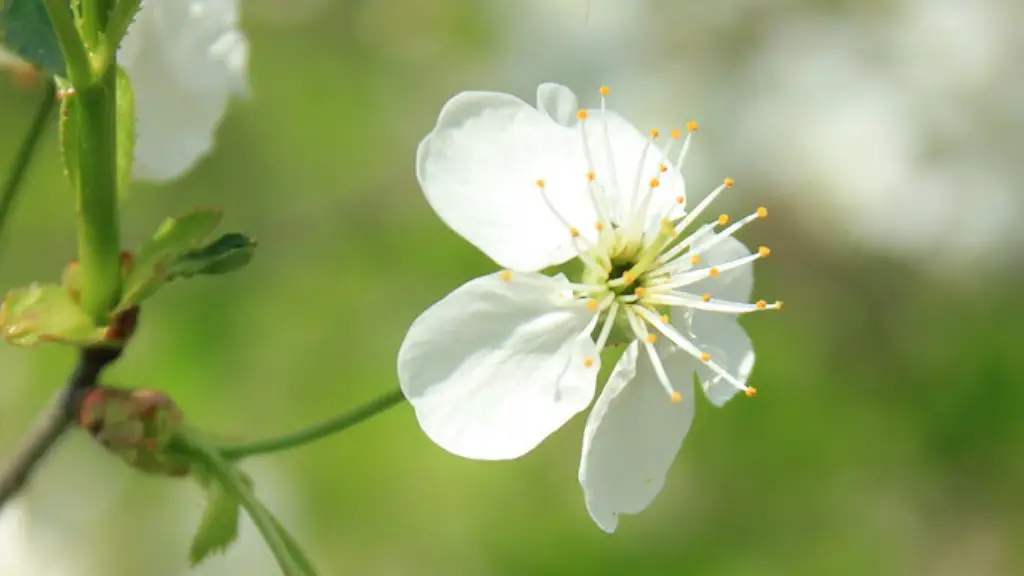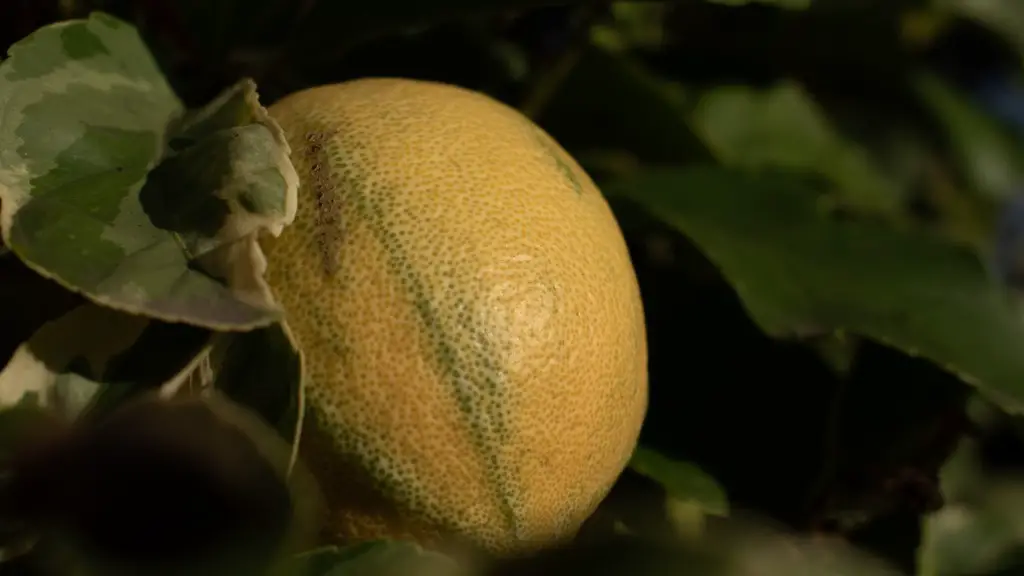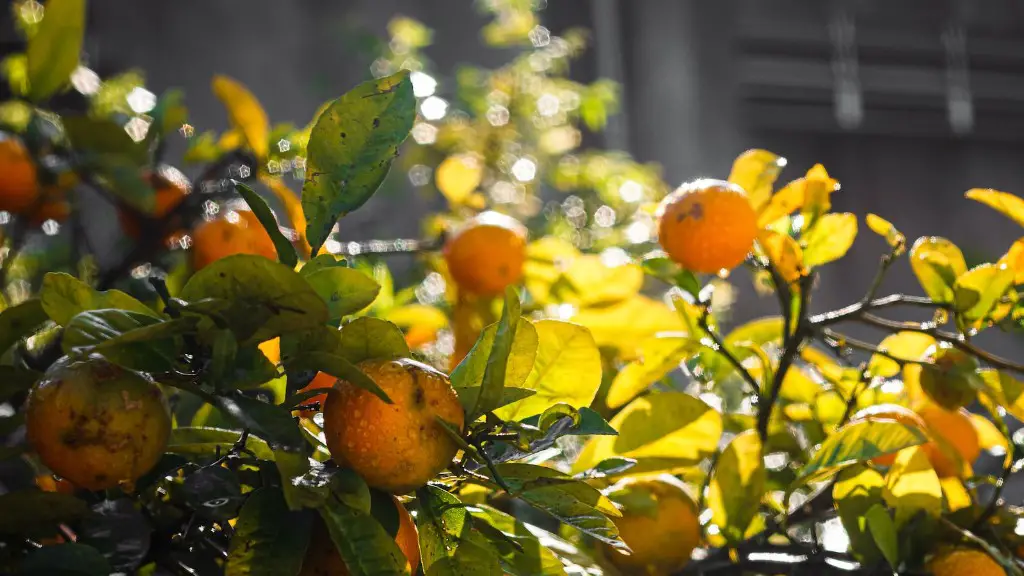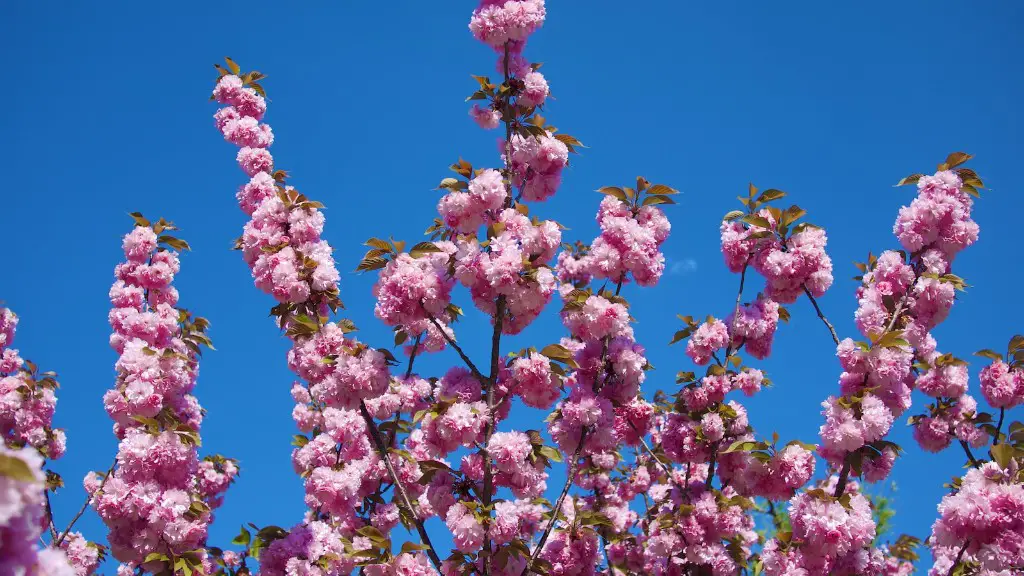Apple trees are one of the most popular fruit trees in the world and are a great source of nutrition. They produce sweet and delicious fruits which contain vitamins, minerals, and other important nutrients. But when should you feed your apple tree to ensure it bears a healthy yield?
In general, apple trees should be fed twice a year to promote healthy growth. The best times to feed apple trees are in early spring (usually in March or April) and then in late summer, usually around August. When feeding your apple tree, you should use an all-purpose fertilizer that is specifically formulated for fruit trees. Avoid chemical fertilizers, as they can damage the tree’s roots or leaves.
In the early spring, the best time to feed your apple tree is when it first starts to bloom. In most regions, this is usually in March or April. At this stage, the tree needs nutrients that will help with pollination, as well as promote root and branch growth. You should also add a layer of mulch around the base of the tree to help trap moisture and create a buffer between the tree and the surface below, allowing the tree to better absorb nutrients.
When it comes to late summer feedings, the best time to feed your apple tree is when the fruits have begun to ripen. This is usually done in August once the apples are close to being harvested. During this time, you should use an all-purpose fertilizer with a low nitrogen content to help the tree better absorb the nutrients. Doing so will ensure a better yield when the apples are ready to be picked.
In addition to regular fertilization, apple trees should also be pruned and thinned during the season. Pruning helps keep the tree healthy and promotes strong branch growth. It’s best to do this just before the apple tree blooms in the early spring. Thinning involves removing some of the excess apples to allow the remaining ones to grow larger.
Finally, it’s important to keep the soil moist throughout the growing season. Be sure to water your apple tree regularly and deeply to help promote healthy growth and root development. Doing so will also help prevent the tree from becoming overly stressed.
Pruning an Apple Tree
Pruning an apple tree is one of the most important steps when it comes to ensuring a successful harvest. Pruning can be done any time of year, although it’s usually done in early spring. This helps to stimulate new growth and improve air circulation. It also allows more sun to reach the leaves and fruit, which promotes healthy growth.
When pruning an apple tree, it’s important to make sure the cuts are clean. You should use a pair of sharp pruning shears to make the cuts, and be sure to cut at a 45-degree angle. If you don’t have the right tools, it’s best to call an arborist to help you properly prune the tree. Doing so will make sure the tree remains healthy and receives the proper nutrients it needs to produce a successful crop.
During the pruning process, it’s also important to remove any dead or diseased branches. This helps reduce the risk of infection and helps keep the tree healthy in the long run. Be sure to always wear protective gloves and clothing when pruning a tree, as some trees can contain harmful chemicals or irritants.
When you’re finished pruning, be sure to spread a layer of mulch around the base of the tree. This can help trap moisture in the soil and helps create a buffer zone between the tree and the surface below. It also prevents weed growth and protects against extreme temperatures. As a rule of thumb, spread two to three inches of mulch around the base of the tree.
Fertilizing an Apple Tree
Fertilizing an apple tree is an important part of the overall health of the tree. This helps to ensure the tree produces an abundant harvest of fruits. When it comes to fertilizer, you should use an all-purpose type that is specifically designed for fruit trees. This helps to provide the tree with the nutrients it needs for optimal growth.
It’s best to fertilizer apple trees in early spring when the tree starts to bloom, and then once again in late summer when the apples are close to being harvested. Make sure to follow the instructions on the bag of fertilizer, as different types of plants require different amounts of fertilizer. Too much fertilizer can actually harm your tree, so it’s best to start off with small amounts and gradually increase if necessary.
You should also spread a layer of mulch around the base of the tree to help regulate moisture in the soil and prevent weed growth. Be sure to use a light colored mulch to help reflect sunlight and heat away from the tree, as this helps to keep the tree cooler. Additionally, adding a layer of compost on top of the mulch can provide the tree with additional nutrients.
Finally, it’s important to water your apple tree regularly throughout the growing season. The tree does best when it receives at least one inch of water per week. Depending on the type of growing season, this may mean irrigating the tree more than once a week. If you’re not able to water the tree regularly, it’s best to install a drip irrigation system to help make things easier.
Harvesting Apples from an Apple Tree
Harvesting apples from an apple tree is one of the best parts of owning one. It’s important to know when to harvest, as each variety of apple has a different ripening time and will require different harvesting methods. Generally, apples should be harvested in late summer or early fall – usually between August and October. Some apples, however, may be ready earlier than this.
When it comes to harvesting apples, you want to make sure the fruits are mature and ready to be picked. A general rule of thumb is to wait until the apples are at least three-quarters of the way to their mature size. You should also look for signs of color change, as this usually indicates that the apple is ready to be picked. Once the apple is ripe, you can either pick it by hand or use a fruit picker.
Once the apples are picked, it’s important to properly store them. Apples are very sensitive to temperature and humidity, so it’s important to store them in a cool, dry place. It’s also important to make sure the apples are not stored for too long, as this can cause them to lose nutrients and flavor. Generally, it’s best to eat the apples as soon as possible after you pick them.
When it comes to harvesting apples, it’s also important to be aware of any potential diseases or pests. Apples are particularly susceptible to certain fungi and insects, so it’s best to inspect the apples regularly. If you see any signs of disease or pest infestation, it’s best to discard the affected fruit and monitor the tree closely.
Storing Apples from an Apple Tree
Storing apples from an apple tree can be a tricky process. Apples are very sensitive to temperature and humidity, so it’s important to store them in a cool and dry environment. The best way to store apples is in a cool cellar with a temperature range of 32 to 36 degrees Fahrenheit and a relative humidity of around 70%. This is the best way to ensure they stay fresh and retain their nutrient content.
When it comes to storage containers, it’s best to use crates with well-ventilated walls. Cardboard or plastic containers can also work, but they won’t provide enough air circulation to prevent spoilage. Also, be sure to separate the apples from each other and the walls of the container to allow for better air circulation.
Finally, it’s important to check on the apples regularly. Apples can go bad very quickly, so it’s important to inspect them for signs of spoilage every few days. If you find any spoiled apples, it’s best to dispose of them as soon as possible. This will help prevent the spread of bacteria and disease.
Pests and Diseases of Apple Trees
Pests and diseases can be a major issue when it comes to apple trees. Many different types of pests and diseases can affect an apple tree, so it’s important to be aware of the most common ones in order to minimize their impact. Some of the major pests and diseases that can affect an apple tree include apple scab, powdery mildew, fire blight, and coddling moth.
Apple scab is one of the most common apple tree diseases. It’s caused by a fungus and is characterized by scabby and sometimes velvety spots on the leaves and fruit of the apple tree. In order to prevent apple scab, it’s important to use fungicides regularly throughout the growing season.
Powdery mildew is another fungal disease that can affect an apple tree. It’s characterized by a white powdery residue on the leaves and fruit of the apple tree, and it can cause significant yield losses if left untreated. Prevention is key, so it’s important to make sure the tree is well-pruned and that excess moisture is managed around the tree.
Fire blight is a bacterial disease that can affect an apple tree, and is especially common in regions with warm and humid climates. It’s characterized by brown, wilted leaves, dead flowers, and wilted fruit. To help prevent and control fire blight, it’s important to make sure the tree has proper air circulation and that there are no areas of standing water around the base of the tree.
Finally, coddling moths can also affect an apple tree. They’re small moths that lay their eggs in the flesh of the apples, leading to damaged fruit. To help prevent coddling moths, it’s important to keep the tree clean and free of fallen fruit. You can also use pheromone traps to help monitor and catch any coddling moths that may be present.




